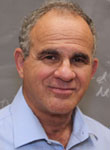
MIPSE Seminar
Experimental Exploration of Dynamic, Astrophysically-Relevant MHD Plasmas

Dynamics relevant to solar and astrophysical plasmas are being investigated using lab experi-ments governed by the same physics, having the same topology, but much smaller time and space scales. Plasma dynamics are tracked using high speed imaging (movies) that resolve sub-Alfven time scales. These movies reveal unexpected, new phenomena. In particular, in contrast to the zero-beta point of view where flows and pressure gradients are neglected, the movies show that a highly collimated MHD-driven plasma flow is critical to the dynamics. This collimated flow can be considered to be a lab version of an astrophysical jet. Since the jet has both axial and azimuthal magnetic fields it can also be considered to be a plasma-confining flux tube with embedded helical magnetic field (flux rope). The jet velocity is in good agreement with an MHD acceleration model. Axial stagnation of the jet compresses embedded azimuthal magnetic flux and so results in jet self-collimation. Depending on how the flux tube radius varies with axial position, flux tubes can have jets flowing into the tube from one end or from both ends where the latter corresponds to an expanding solar coronal loop. Jets kink when they breach the Kruskal-Shafranov stability limit. The acceleration of a sufficiently strong kink can provide an effective gravity that provides the environment for a spontaneously de-veloping fine-scale, extremely fast Rayleigh-Taylor instability that erodes the current channel to less than the ion skin depth. This cascade from the ideal MHD scale of the kink to the non-MHD ion skin depth scale can result in a fast magnetic reconnection where the jet breaks from its source electrode.
Paul M. Bellan received the B. S. (Hon.) degree from the University of Manitoba in 1970 and the M.A. and Ph.D. degrees from Princeton University in 1972 and 1976 respectively. After holding a postdoctoral position at the Princeton Plasma Physics Laboratory, in 1977 he joined the faculty of the California Institute of Technology where he is currently a Professor of Applied Physics. His research activities include experimental and theoretical studies of lower hybrid wave propagation in plasmas, Alfven waves, stochastic ion heating by coherent drift waves, magnetic helicity, spheromaks, solar coronal loops, astrophysical jets, and dusty plasmas where the dust particles are water ice. He is the author of the monograph "Spheromaks" and the textbook "Fundamentals of Plasma Physics", and he is a Fellow of the American Physical Society.
 MENU
MENU 
